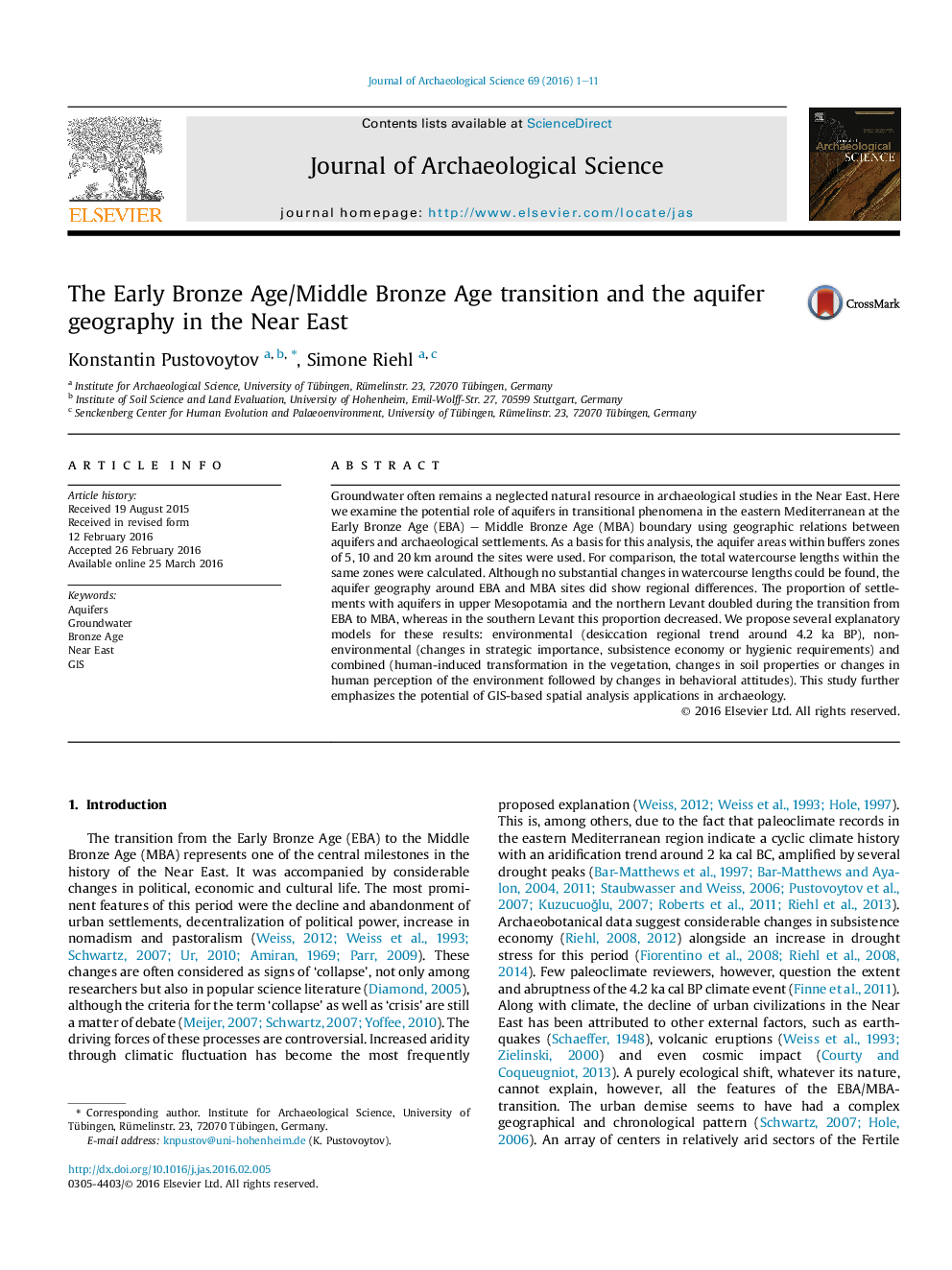| کد مقاله | کد نشریه | سال انتشار | مقاله انگلیسی | نسخه تمام متن |
|---|---|---|---|---|
| 1035287 | 1483891 | 2016 | 11 صفحه PDF | دانلود رایگان |
• Bronze Age settlement dynamics in the Near East can be related to aquifer geography.
• Aquifer-settlement links varied regionally during Early/Middle Bronze Age transition.
• Proportion of settlements with aquifers increased in the northern Fertile Crescent.
• In the southern Levant, this proportion decreased.
• Diverse explanatory options of these phenomena are discussed.
Groundwater often remains a neglected natural resource in archaeological studies in the Near East. Here we examine the potential role of aquifers in transitional phenomena in the eastern Mediterranean at the Early Bronze Age (EBA) – Middle Bronze Age (MBA) boundary using geographic relations between aquifers and archaeological settlements. As a basis for this analysis, the aquifer areas within buffers zones of 5, 10 and 20 km around the sites were used. For comparison, the total watercourse lengths within the same zones were calculated. Although no substantial changes in watercourse lengths could be found, the aquifer geography around EBA and MBA sites did show regional differences. The proportion of settlements with aquifers in upper Mesopotamia and the northern Levant doubled during the transition from EBA to MBA, whereas in the southern Levant this proportion decreased. We propose several explanatory models for these results: environmental (desiccation regional trend around 4.2 ka BP), non-environmental (changes in strategic importance, subsistence economy or hygienic requirements) and combined (human-induced transformation in the vegetation, changes in soil properties or changes in human perception of the environment followed by changes in behavioral attitudes). This study further emphasizes the potential of GIS-based spatial analysis applications in archaeology.
Journal: Journal of Archaeological Science - Volume 69, May 2016, Pages 1–11
